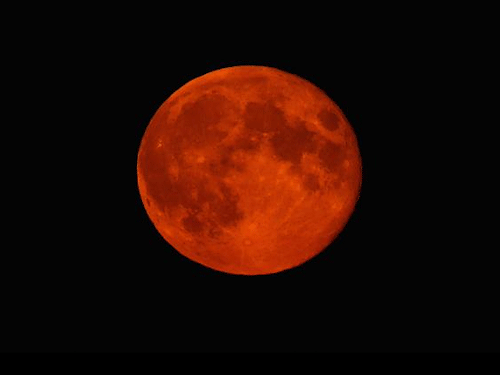
For the first time in more than 30 years, people will witness a "supermoon" in combination with a total lunar eclipse and a famous NASA photographer has provided some tips to click the best shot from smartphone.
Earth's shadow will begin to dim the "supermoon" slightly, beginning on September 28 at 5.41 a.m. (Indian time).
According to Bill Ingalls, NASA's senior photographer, your smartphone can get you a good shot.
"You are not going to get a giant moon in your shot, but you can do something panoramic. Think about being in an urban area where it is a little brighter," Ingalls said in a statement.
To get the right light balance of the moon on smartphones, "Tap the screen and hold your finger on the object (in this case, the moon) to lock the focus. Then slide your finger up or down to darken or lighten the exposure," he advised.
The total eclipse will last one hour and 12 minutes and will be visible to North and South America, Europe, Africa, and parts of west Asia and the eastern Pacific.
Viewers can see the supermoon unmasked after nightfall. The total lunar eclipse will mask the Moon's face for more than an hour.
"Think of how to make the image creative. It means tying it into some land-based object. It can be a local landmark to give your photo a sense of place," Ingalls said.
You do not have to live near an iconic landmark or talk your way onto a rooftop to get the perfect shot.
"Instead, work with what you have," he said.
"This would be a lot of fun to do with kids, if nothing else, to just have them witness it and talk about what's taking place," he added.
He recommends personalising the experience by using people in the shot.
"There are great photos of people appearing to be holding the moon in their hand. You can get really creative with it," he concluded.